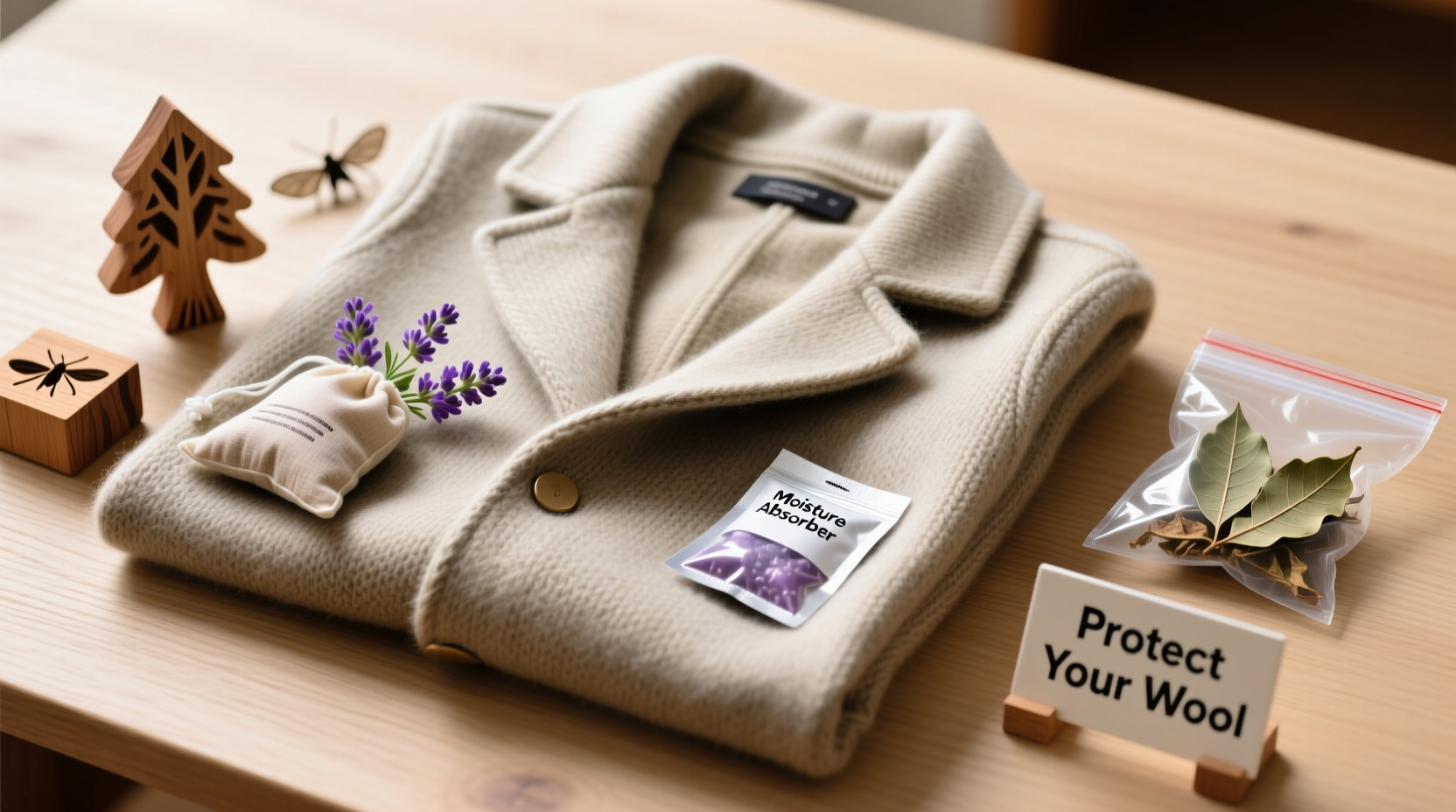A woolen jacket is a timeless investment—warm, elegant, and built to last. Yet, one of the most insidious threats it faces isn’t wear or weather, but moths. These silent invaders can turn a cherished garment into a lace-like ruin in a matter of months. The good news: moth damage is almost entirely preventable with the right knowledge and habits. By understanding moth behavior and implementing smart care routines, you can preserve your woolen jacket for years, even decades.
Understanding the Threat: How Moths Damage Wool

Moths themselves don’t chew through fabric—larvae do. Adult clothes moths (primarily Tineola bisselliella, the common clothes moth) are attracted to dark, undisturbed spaces where they lay eggs on natural fibers like wool, cashmere, and fur. Once hatched, the larvae feed on keratin, a protein found in animal-based textiles. This feeding causes holes, thinning, and structural weakening in the fabric.
Contrary to popular belief, moths aren’t drawn to clean wool. They prefer garments stained with sweat, food residue, or body oils. A jacket stored at the back of a closet, forgotten for months, is especially vulnerable. Prevention starts with disrupting this lifecycle before it begins.
Step-by-Step Guide to Moth-Proof Storage
Proper storage is the cornerstone of moth prevention. Follow this five-step process to safeguard your jacket during off-seasons or long-term storage:
- Clean Thoroughly: Hand-wash or dry-clean according to care labels. Never store a wool garment unwashed.
- Dry Completely: Ensure the jacket is 100% dry before packing. Dampness encourages mold and attracts pests.
- Brush Gently: Use a soft clothes brush to remove surface dust and potential eggs from seams and collars.
- Pack in Breathable Containers: Avoid plastic bags—they trap moisture. Instead, use cotton garment bags or breathable storage boxes.
- Add Natural Repellents: Place cedar blocks, lavender sachets, or dried rosemary in the storage area. Refresh every 3–6 months.
Store the jacket in a cool, dry, well-ventilated space. Avoid attics and basements, which often have humidity fluctuations that encourage infestation.
Do’s and Don’ts of Moth Prevention
| Do’s | Don’ts |
|---|---|
| Clean wool items before storage | Store dirty or unworn wool garments |
| Use cedar or lavender as natural repellents | Rely solely on chemical mothballs (toxic and smelly) |
| Rotate seasonal clothing regularly | Leave jackets untouched in closets for over 6 months |
| Vacuum storage areas monthly | Ignore small holes or fraying—they signal early infestation |
| Inspect seams, collars, and cuffs frequently | Use plastic bins without ventilation |
Expert Insight: Why Prevention Beats Cure
“Once moth larvae establish a colony, eradication becomes difficult. The key is consistent vigilance—cleaning, inspecting, and rotating stored garments. It takes minutes a month to prevent thousands in replacement costs.” — Dr. Lena Torres, Entomologist & Textile Preservation Specialist
Dr. Torres emphasizes that reactive measures—like fumigation or freezing—are often too late to save the garment. Proactive maintenance, however, shifts the balance in your favor. Regular inspection not only catches early signs of moths but also helps maintain fabric integrity.
Mini Case Study: Recovering a Heirloom Jacket
James inherited his grandfather’s vintage wool cavalry jacket, a family treasure passed down since the 1940s. Stored in a cedar chest for years, it was discovered with multiple holes along the inner lining and shoulders. Upon closer inspection, tiny casings and frass (larval droppings) were visible in the folds.
He immediately isolated the jacket, vacuumed the chest thoroughly, and froze the garment in a sealed bag for 72 hours to kill any remaining eggs or larvae. After thawing and airing, he hand-washed it with a wool-safe detergent, then air-dried flat. Though some damage remained, the jacket was stabilized. James now stores it in a breathable cotton cover with fresh lavender sachets and checks it quarterly. “It’s not just a coat,” he says. “It’s a piece of history. Now I know how to protect it.”
Checklist: Monthly Wool Care Routine
- Inspect all wool garments for signs of moths: holes, webbing, or tiny tubes (larval cases)
- Vacuum drawers, shelves, and closet corners where lint accumulates
- Rotate stored items to disrupt hiding places
- Refresh natural repellents (e.g., sand cedar blocks lightly to renew scent)
- Ensure storage areas remain dry; consider using a hygrometer to monitor humidity (ideal: below 50%)
- Wear wool items occasionally—movement discourages egg-laying
Frequently Asked Questions
Can freezing kill moth eggs in a wool jacket?
Yes. Place the garment in a sealed plastic bag and freeze for at least 72 hours. This kills eggs, larvae, and adult moths. After freezing, thaw slowly at room temperature and air out before storing or wearing.
Are cedar hangers enough to protect my jacket?
Cedar hangers help repel moths due to their natural oils, but they lose potency over time. For best results, combine them with other methods—cleaning, airtight breathable storage, and regular inspection. Sanding the hanger surface every few months restores its effectiveness.
What should I do if I find holes in my wool jacket?
First, confirm it’s moth damage and not wear or manufacturing flaw. Look for irregular holes, especially in hidden areas like underarms or collars, and check for silk-like tunnels or pellets. Isolate the garment, clean or freeze it, then assess repair options. Small holes can be darned; larger damage may require professional restoration.
Conclusion: Protect Your Investment with Smart Habits
Your woolen jacket deserves more than occasional wear—it demands stewardship. Moth damage doesn’t happen overnight, and neither does protection. By integrating simple, science-backed practices into your routine, you ensure that your jacket remains functional, beautiful, and intact for generations. Clean before storing, inspect regularly, use natural deterrents wisely, and never underestimate the power of vigilance.









 浙公网安备
33010002000092号
浙公网安备
33010002000092号 浙B2-20120091-4
浙B2-20120091-4
Comments
No comments yet. Why don't you start the discussion?